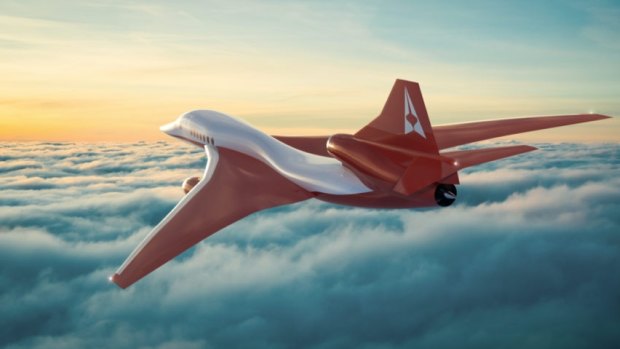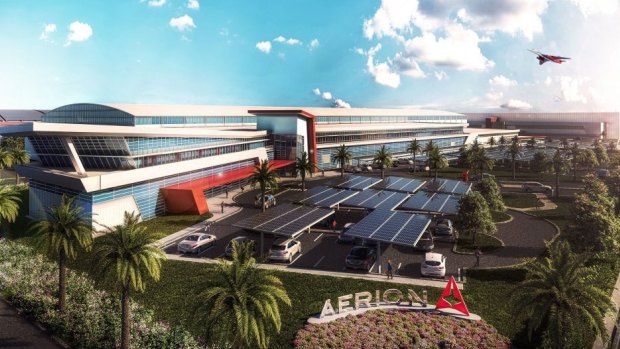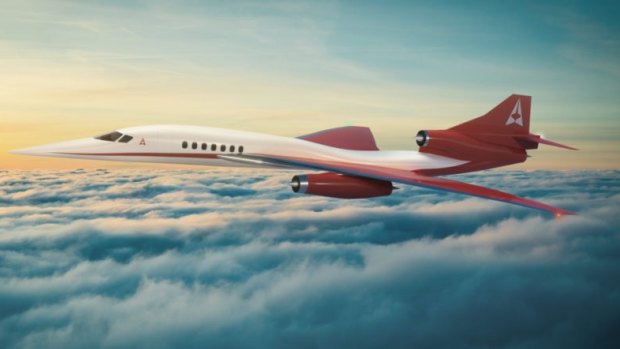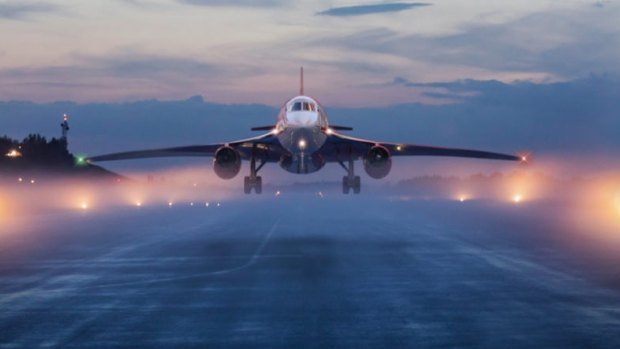This was published 3 years ago
Aerion Supersonic AS2: New supersonic jet undergoes testing as giant manufacturing plant unveiled
By Craig Platt

The AS2 will fly at mach 1.4, or 1715 km/h.
Aerion Supersonic, one of several companies developing a next-generation supersonic jet, is moving forward with its plans to start production on its aircraft in 2023.
The company has announced it plans to build a huge new headquarters and manufacturing facility in Melbourne.
Before Australians get too excited, that's Melbourne, Florida, in the US.

The design for Aerion's headquarters and manufacturing plant in Melbourne, Florida.
The $300 million facility will be located near Melbourne-Orlando Airport with about 185,000 square metres of building space, plus taxiways and other ground support facilities for the planned jet.
The new facility will employ 675 people, with Aerion citing Florida's association with high tech flight, and its connected workforce, as a key reason for choosing the location. The coastline east of Orlando is known as the Space Coast for its connection to America's space program. It's home to the Kennedy Space Center (KSC) and Cape Canaveral, where all of NASA's manned space flights have taken off from since 1961.
The AS2 aims to be the first new commercial supersonic aircraft to enter service in more than 50 years. The last supersonic commercial jet, the Concorde, was retired in 2003, three years after the crash of an Air France Concorde that killed 113 passengers and crew.

The AS2 will fly using "Boomless Cruise" supersonic technology.
The AS2 will fly at mach 1.4, or 1715 km/h. The company says the jet would carry between eight and 12 passengers and could make the flight from New York to London in 4.5 hours, compared with about seven hours for regular commercial planes. It would cut at least four hours off the flight time between New York and Sydney, which took more than 19 hours on a Qantas test flight in 2019.
Last month, the AS2 design completed wind tunnel tests at high and low speeds, the equivalent to 78,000 nautical miles (144,000 kilometres) flown, according to Aerion.
Aerion aims to achieve several firsts with the AS2, including using what it calls "Boomless Cruise" technology that will allow it to fly at supersonic speeds without creating a sonic boom. Supersonic flight is typically banned by authorities over land due to sonic booms.

The plane will cut the flying time from New York to London from seven hours to just 4.5.
The aircraft is also the first to be designed to be capable of flying entirely on synthetic fuels and aims to be carbon neutral from launch.
Aerion plans to build 300 AS2 jets in its first 10 years of production. b The plane will have a price tag of $US120 million.
Correction: An earlier version of this article incorrectly stated that the Concorde was the only other supersonic commercial passenger jet. The Russian Tupolev Tu-144 supersonic jet operated passenger services from November 1977 to June 1978.
See also: The Boeing supersonic jet that never took off for Qantas
See also: 'Game changer': Secret 'bullet' plane completes test flights
Sign up for the Traveller newsletter
The latest travel news, tips and inspiration delivered to your inbox. Sign up now.